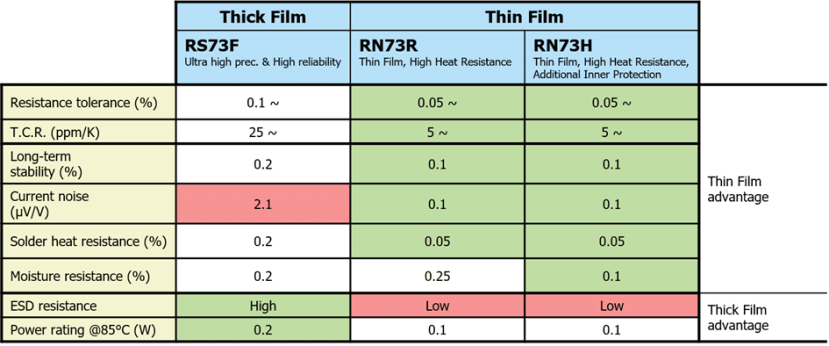Precision surface mount resistors – when to use thin film and when to use thick film.
Follow articleHow do you feel about this article? Help us to provide better content for you.
Thank you! Your feedback has been received.
There was a problem submitting your feedback, please try again later.
What do you think of this article?
Precision thin film surface mount resistors have been around for almost a quarter of a century. They are excellent devices offering the user a combination of low inductance, low noise, low-temperature coefficient and close tolerance.
In many instrumentation, automotive, audio, and industrial applications, they are pretty much the precision resistor of choice.
However, they do have one major weakness, vulnerability to ESD pulses. This means the designer needs to take care to add ESD protection in the form of protection devices such as varistors etc in the design.
The image below shows the effect of an ESD pulse on the resistance track of a thin film device.
Precision thick film resistors are much less vulnerable to ESD pulses than thin film devices. However, in the past, the best tolerance widely available, in surface mount, was in the region 0.25% - 0.5% and a temperature coefficient of around 50ppm, which was not ideal for a designer needing a higher precision device.
KOA’s precision thick film RS73 series offers a 25ppm TC combined with a 0.1% tolerance and is a good choice for rugged precision applications such as some industrial and automotive applications.
In new designs, this means that fewer protective components are needed and existing designs can be ‘ruggedised ‘ by substituting thin film precision devices with thick film resistors.
So, what is the drawback of using precision thick film?
The table below compares the main parameters of both technologies ( 0603 ).
From the table it can be clearly seen that the RS73F has a poor noise performance, so is not suitable for audio applications. Thin film also outperforms precision thick film in other areas too, such as TC, tolerance, high-frequency performance, and long-term stability. So for applications needing these parameters the use of thin film resistors such as the RN73H and RN73R series is recommended.
However, the RS73 has a much better ESD performance and allows twice the rated power for the same case size.
So in conclusion, while thin film still offers the better performance in several areas of the two technologies, precision thick film is an excellent choice for rugged designs and in suitable applications, the thick film RS73 can reduce component count.



